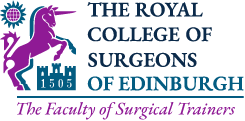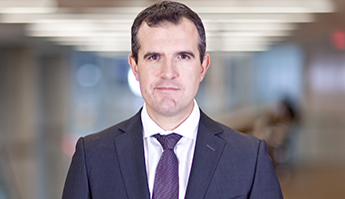


We speak to Dr Teodor Grantcharov, above, holder of professorships in Toronto and Copenhagen and leading authority on simulation and assessment
FST: How did you become interested in surgical education as a special field?
Teodor Grantcharov: I started working on this just before 2000 when I was a resident in Copenhagen. I chose surgery because I enjoyed operating, but I noticed that there was a lot of meaningless feedback from my cases. After operating, people I worked with just said, “That was a good job” or “You did very well”. At first, I was flattered and enjoyed it, but I was aware that with that type of feedback, I would never get better. So I started filming my procedures. I would get positive feedback at the time, but when I went home and reviewed the footage, I could clearly see aspects that could have been done better. I started thinking that we needed to improve the way we evaluate each other, and the way we assess performance and share feedback in a more structured way. I’m still trying things that I can do better when I review my performance, even though I’ve been practising for more than 15 years.
FST: Surgical training can be split into two sides: those who provide the training and those who receive it. Is there one side that you’re more interested in?
TG: This is something that runs very deep in our culture. Once we graduate, we feel that we are on the other side, but we are not – we are still very much trainees. We need to learn new procedures or use new technology, as surgery is always changing. If we feel that we know everything and we never make mistakes, we will never be good teachers.
FST: One of the reasons the College’s Faculty of Surgical Trainers was established was to improve the recognition given to consultants who provide surgical training in the UK. In your own country, is there a distinction between surgeons who provide training and those who don’t?
TG: The training system in Canada is slightly different to the one in the UK, but the problem is the same. We graduate from being trainees and are then expected to be trainers. To some extent, consultant surgeons have taken this responsibility for granted and the system has left it to individuals to determine how they are going to teach and how much time they will invest in it.
There are no standards or formal education for the trainer. That’s why I think it’s so important that the College’s Faculty of Surgical Trainers has produced the pioneering Standards for Surgical Trainers. Ensuring that trainers are qualified, have the necessary tools, and know how to deliver are critical points in the quality assurance of education.
FST: How does your role as professor of surgical simulation in Copenhagen fit around your responsibilities in Canada?
TG: I live and practise in Canada, but I trained in Copenhagen and I have maintained a relationship with the university through supervising students at PhD and master’s level. As such, my appointment as professor of surgical simulation in December 2013 was a natural progression.
My surgical-simulation role helps to facilitate the exchange of students and practices. There is no perfect health system in the world: there are good and bad practices in every system, and we should learn from each other to adopt the positive aspects and eliminate the bad elements.
FST: Is there a growing recognition that simulation is an important aspect of surgical training and education?
TG: When I first went into practice, there had been very few developments in virtual reality for training and assessment. Only a handful of individuals were working in this area and I think I got one of the first doctorates related to it. Yes, a lot of people questioned simulation’s value at that point – around 1999–2000 – but I’m pretty confident that nobody questions its importance now.
FST: What type of simulation does your department offer?
TG: At Toronto University we are focusing on moving the learning curve from the real environment – that is, from the patient – to the simulated environment. And there are so many different ways of doing it. There are expensive high-tech devices; there are simple, good-old box trainers; there are full-body mannequins. There is a lot of focus on which is better and I have always said that I don’t think this is a useful debate.
The best solutions may depend on the local environment. For example, in Canada, surgeons do not receive salaries, but are paid based on cases. So getting time from surgical trainers is the most challenging thing. In this situation, if some of the trainers’ time could be replaced with time practising on high-tech automated devices, it would help to alleviate pressure in the system. Even though such simulators are an expensive one-time investment, they would have multiple benefits for the local healthcare environment. In other countries, there may be better access to trainers, but more difficulty in funding simulation equipment, so a different model would be needed. It doesn’t matter which model we use as long as we deliver on the curriculum, with clearly stated standards. The main point is that we need to eliminate learning curves in the operating room and shift them to the simulated environment.
FST: In the UK, some trainees borrow their department’s box trainers to work on their skills at home, as there may not be time to do so during working hours. Is this a common issue in Canada?
TG: The quality of training shouldn’t be the responsibility of any individual. It should be the responsibility of the system. If you reach a point where people have to invent their own quality in their own time, I think the system has failed. Doctors learning independently will always lead to huge variance and mistakes. A good system should retain responsibility for any initiatives that improve quality, reduce adverse events, improve outcomes and reduce costs.
FST: Are there differences between the use of simulation for training in skills improvement and simulation for assessment? Are they distinct areas or do they overlap?
TG: There is no training without assessment; the two can’t be separated. Sometimes there is too much focus on training without formal assessment and standards. One without the other will not be successful. I feel very strongly that modern training must include assessment.
FST: Has simulation established the position it deserves or has it got more potential to support training?
TG: I think that development and improvement will never stop. We will never get to the point where we feel we ‘made it’. The next issue to focus on is the consequences of our assessments. How can we use assessments in high-stakes scenarios? What will happen with those who fail? Are we going to remediate them? Is this the result of lack of abilities that are changeable or not changeable?
It’s established that simulation is effective and there are different models that work, so the next issue is how to ensure that trainees and trainers meet certain standards. Until then, we can continue to build evidence. But I really hope that one day we will see a curriculum with built-in assessment systems that will be ready to take the consequence of those assessments.
Dr Teodor Grantcharov is Associate Professor at the University of Toronto, Professor in Surgical Simulation at Copenhagen University and holds a Canada Research Chair in Simulation and Surgical Safety. He is the keynote speaker at the 2015 Faculty of Surgical Trainers Annual Conference, taking place on Thursday 22 October 2015 at the Macdonald Burlington Hotel, Birmingham
Due to essential systems maintenance and upgrades there will be interruptions to some on-line services on Saturday 19th of August.
We apologise for any inconvenience caused.
×